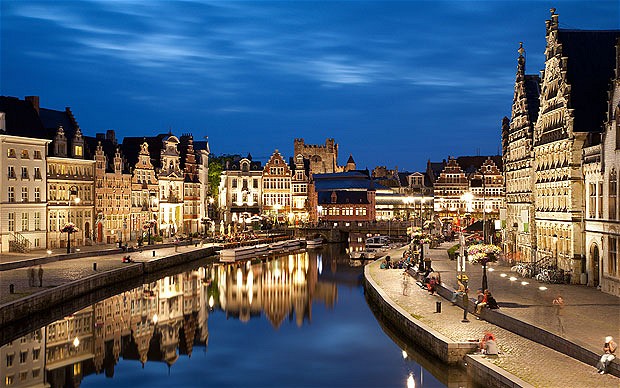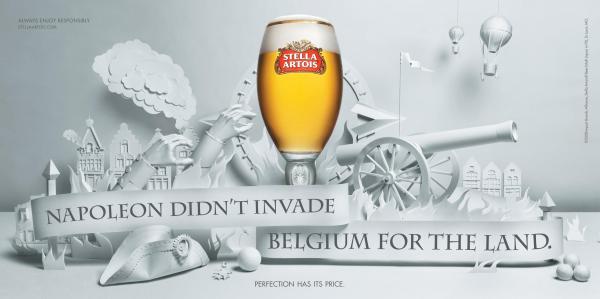From the age of seven, I spent about ten years in Belgium, culminating in grad school in Leuven—home of Stella Artois—and a stint working in Brussels, the capital city. Belgium is a small country about the size of Maryland, with approximately ten-and-a-half million inhabitants. There are three distinct communities—the Flemish who speak Dutch, the Walloons who speak French, and a small pocket of German speakers to the east.
During the time I lived there, I was always aware of the central place of beer in local culture, even if I didn’t partake until I came of age. In Belgium, beer is as commonplace as chocolate and waffles. It is part of an artisan tradition, which places great emphasis on small, local, expert batches made by craftsmen, using techniques that sometimes date back to the Middle Ages.
Quality or quantity?
Many beers—which are usually paired with local cheeses—are not available beyond the regions where they are produced. The beer and cheese produced by Trappist monks are particularly prized by consumers, because of their unique flavors and high quality. There are six monasteries spread throughout the small country, where monks sell their products to remain self-sufficient and support local communities. To give you a sense of the process, some of these beers take months to ferment just right.
At the other end of the spectrum is the much more affordable pilsner beer, which can be made in two or three days and is sold everywhere, from supermarkets to vending machines. As far back as I can remember, Stella Artois and its lesser known rival, Jupiler, were considered the working man’s beer. They were cheap, sold in little brown bottles and cans, and so ubiquitous as to be invisible.
Then, a strange thing happened. When I returned to England for college in the early 1990s, Stella was there too, but she looked very different. She was dressed in a tall, green bottle, with a fancy label and a high price. I barely recognized her. It turns out that Stella had met other people when she went overseas and they transformed her beyond all recognition.
Extreme makeover
At the time, Stella was owned by Interbrew, a multinational beverage company and the largest beer producer in Belgium. When the company tried to expand to the UK in the 1980s, it was more expensive than local products. The marketing company retained, Lowe and Partners Worldwide, turned this negative into a positive by positioning the beer as “reassuringly expensive.” The ad campaign was hugely successful and Stella Artois gained a 38% share of the UK premium brand beers, no mean feat in a country that has its own myriad specialized beers.
So, how did they do it? It’s not enough to try to convince people that the high price is in fact right, you need to give them a hook. Lowe and Partners decided to use the “country-of-origin” effect and imply that Stella was a French beer. You have to realize that Belgian beers were not yet famous and the hipster had not yet been invented. At that time, Brits saw Belgium as a second- or third-tier country. France, on the other hand, was highly regarded by Brits for its wine and spirits. Therefore, marketing Stella as a French beer was ingenious.
It was only when Belgian beers became famous in their own right in the past decade that Stella’s real origins were highlighted in international markets. Although InBev did not use the same campaigns in other markets, it used a similar high-touch connotation for Stella Artois around the world, until she became a household name like Heineken. In 2004, Interbrew merged with Brazilian brewer AmBev and together they became InBev, and then Anheuser-Busch InBev in 2008 when they merged with the U.S. beverage giant. Today, Anheuser-Busch InBev is one of the largest global beverage companies.
The most significant change in Stella’s marketing is that she’s now firmly positioned as Belgian, because the “Made in Belgium” brand has a high equity of its own and now has global potential. I have seen Stella in Asia, Africa, and America, but, more surprisingly, I have started to see some of the lesser known beer brands close to home as well: Chimay, Leffe, Orval, Duvel, Westmalle, and even Westvleteren. The closest analogy I can find is if you knew a quiet, unremarkable kid in school and then one day saw her on the cover of magazines in a different country.
It’s quite a marketing coup and it’s all the more remarkable for a small, traditional brand from a small, traditional country that many people had never heard of. However, so-called beer connoisseurs are now decrying Stella as lacking in quality and authenticity. This is a question facing many high-end brands: should Belgium have stuck to small batches of local craft beers and remained true to its roots, or was the beer industry justified in expanding its market by any means necessary, including pretending to be something it was not?




10 Responses to How Belgium conquered the world.